Did you know that websites that prioritized content optimization saw a 55% increase in organic traffic? From my experience turning a passion for digital marketing into a thriving online business, the significance of keyword analysis cannot be overstated. In this endeavor, Semrush has been instrumental in this journey.
Analyzing keywords with Semrush isn’t just about finding popular terms; it’s about understanding search volume, keyword difficulty, and search intent to craft high-ranking content. This guide will walk you through each step, ensuring you boost your site’s visibility and traffic.
In this tutorial, I’ll show you how to use Semrush to dissect and understand keyword metrics, helping you make data-driven decisions for your content. Buckle up, and let’s dive into the nitty-gritty of keyword analysis!
Step 1: Access Keyword Overview
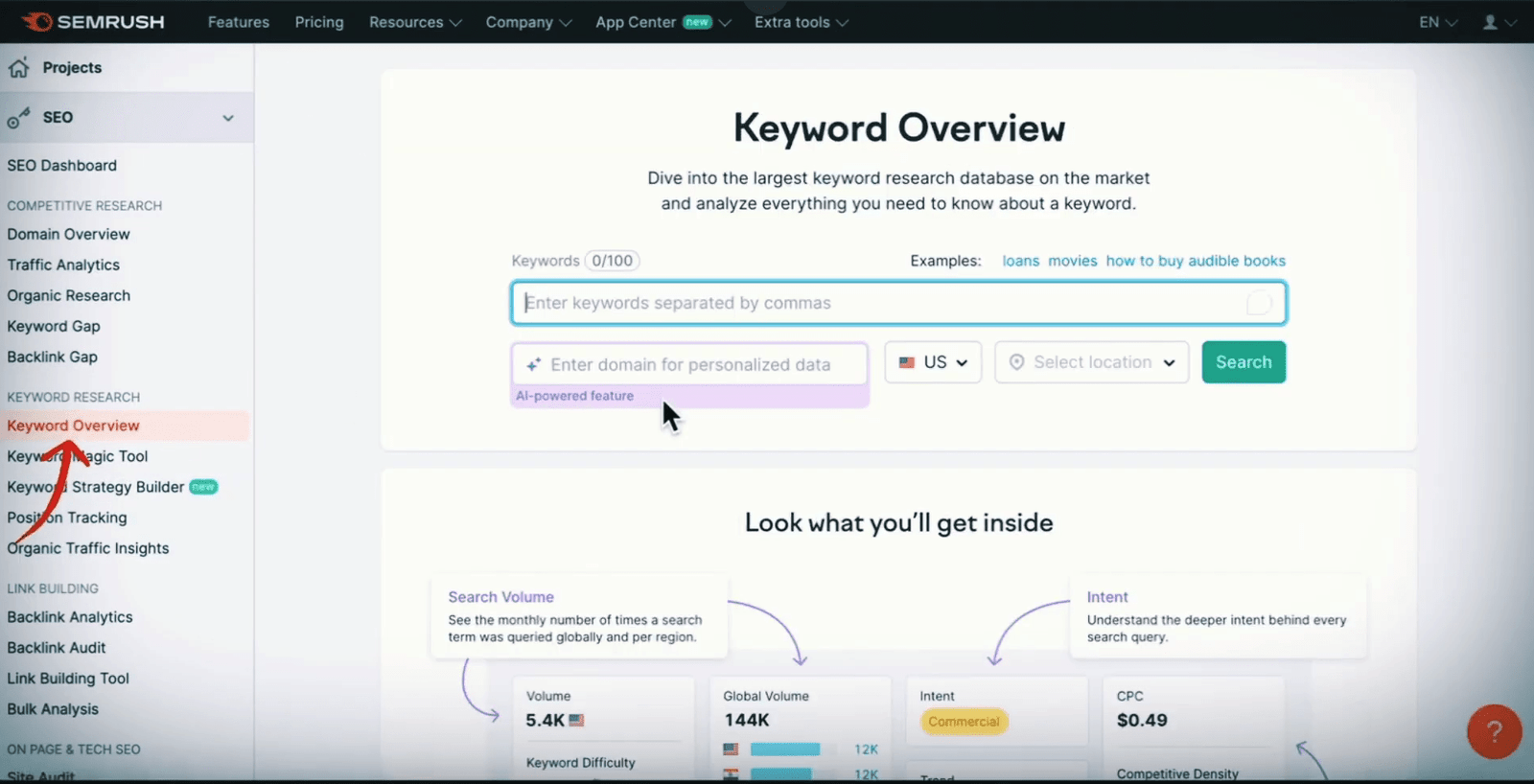
First, head over to Semrush and navigate to the Keyword Overview section. Type in your keyword, in our case, “how to start a blog” and hit search. This will be your starting point for in-depth analysis.
Step 2: Analyze Search Volume
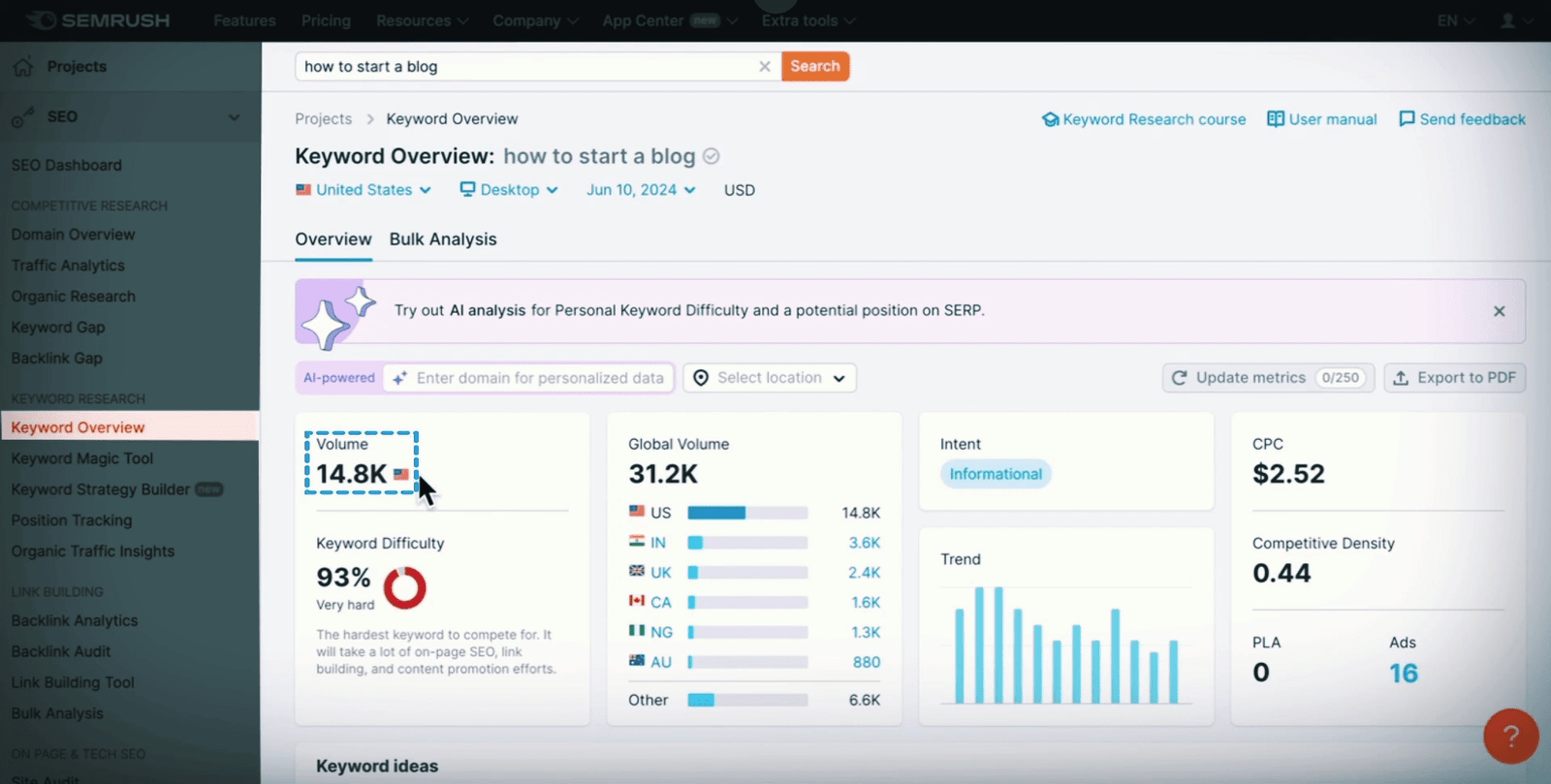
Begin by checking the search volume for your target market. For “how to start a blog,” the US sees almost 15,000 searches per month. High search volume indicates strong interest and potential traffic.
Why Search Volume Matters:
- Popularity: A higher volume means more people are searching for this term.
- Potential Traffic: More searches can lead to more visitors if you rank well.
Step 3: Evaluate Keyword Difficulty
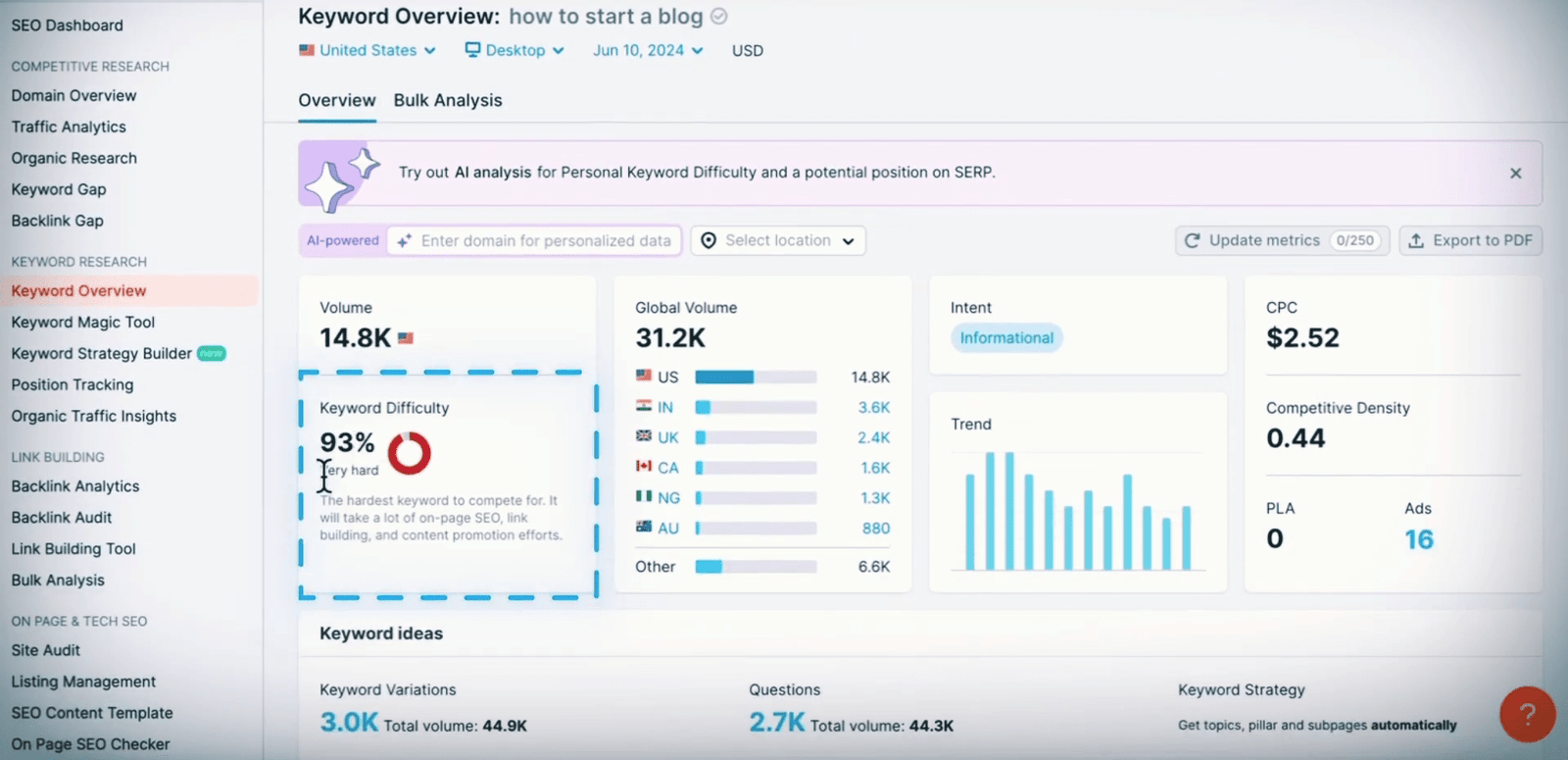
Next, examine the keyword difficulty score. This metric tells you how challenging it will be to rank for your keyword. For our keyword, the difficulty is very high, suggesting the need for numerous high-quality backlinks and a robust domain.
Key Takeaways on Keyword Difficulty:
- Backlinks Required: Higher difficulty requires more backlinks.
- Domain Strength: Stronger domains have a better chance to rank.
Step 4: Check Global Search Volume
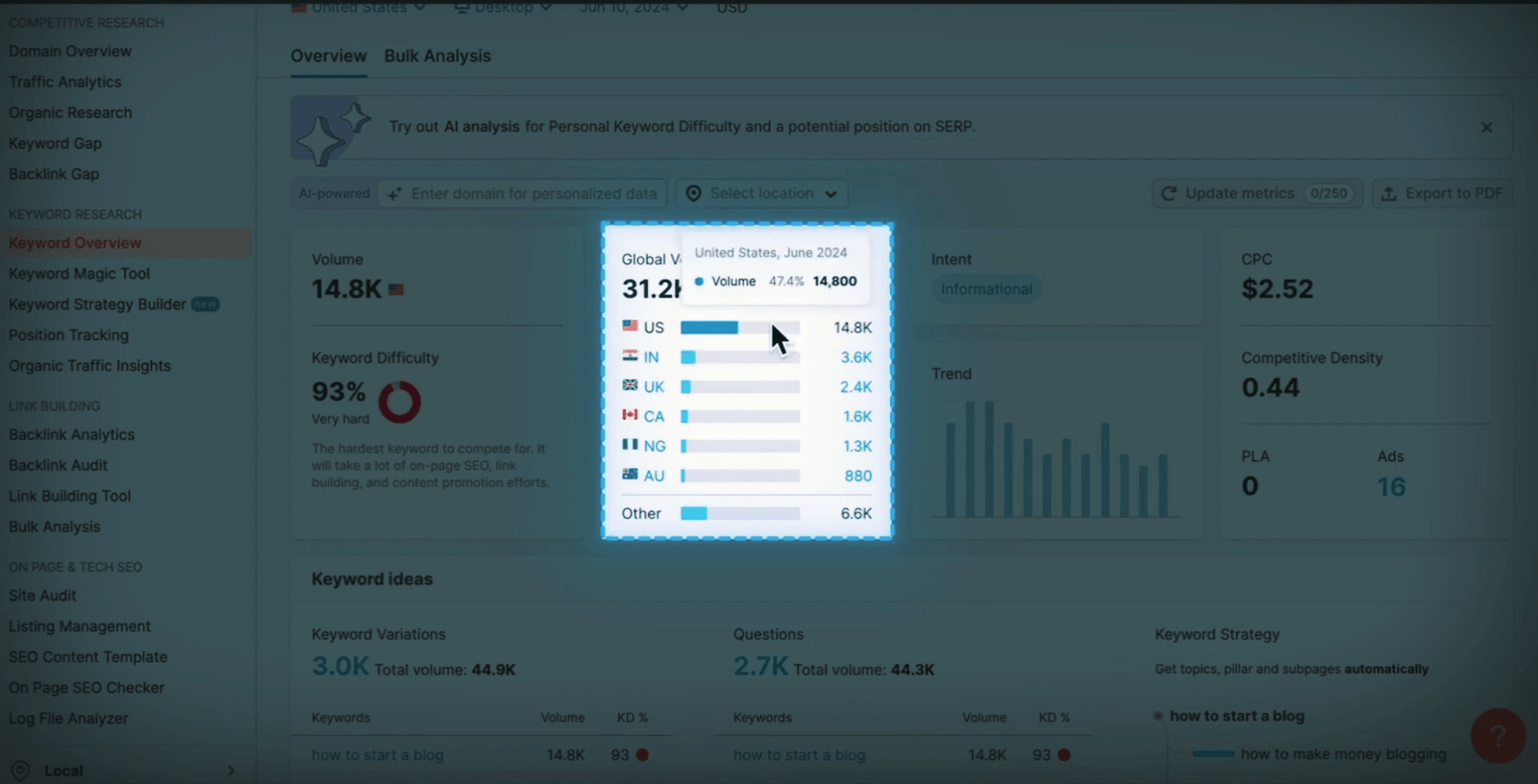
Global volume helps you understand how your keyword performs in different countries. While the US leads for our keyword, markets like the UK, Canada, and Australia also contribute significantly.
Insights from Global Search Volume:
- Identify Target Markets: Focus on regions with high search volumes.
- Expand Reach: Consider tailoring content to other high-volume countries.
Step 5: Understand Search Intent
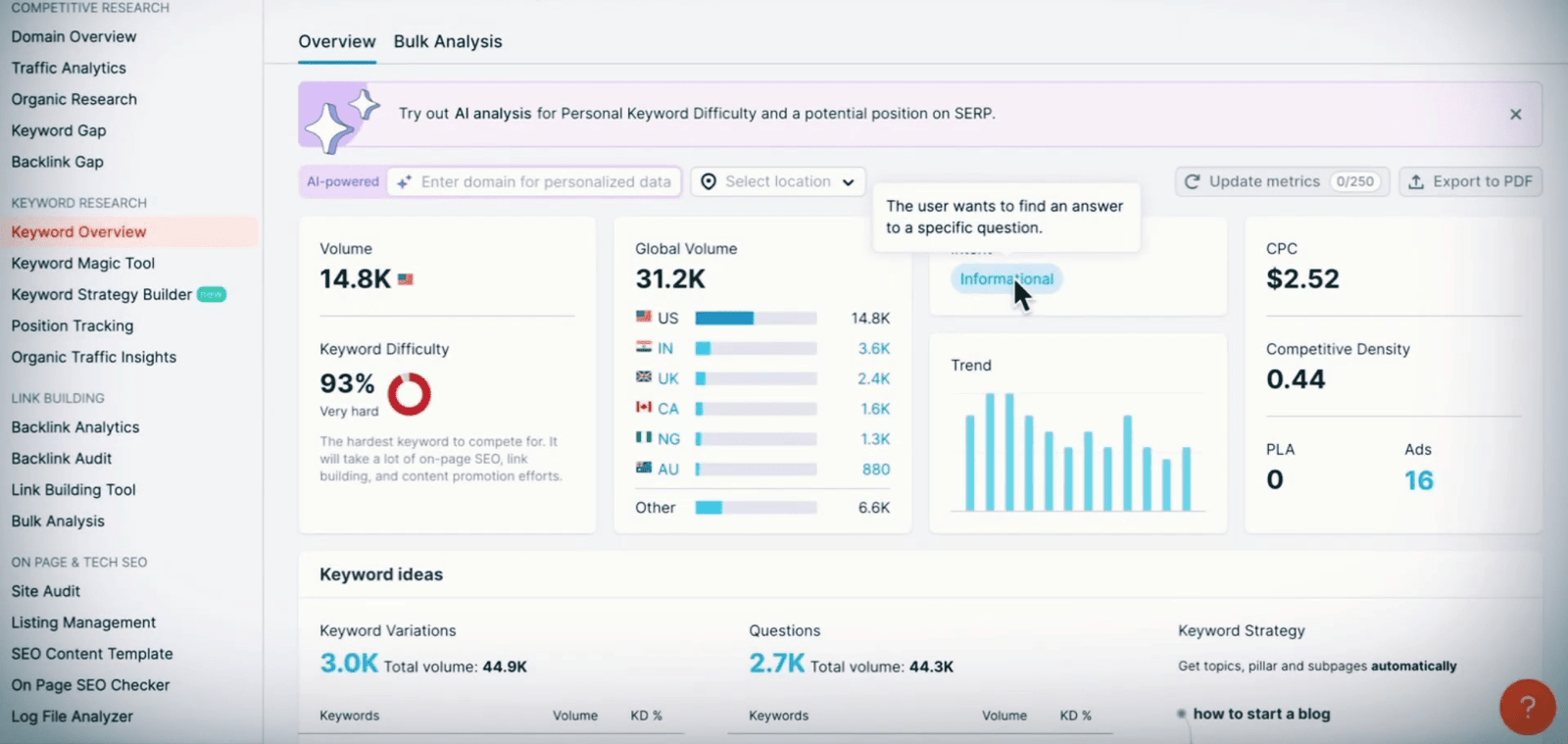
Search intent is crucial. For “how to start a blog,” the intent is informational. This means users are looking for detailed guides and insights rather than products or services.
Why Search Intent is Important:
- Content Relevance: Align content with what users are looking for.
- User Satisfaction: Meeting intent boosts engagement and rankings.
Step 6: Analyze Trends
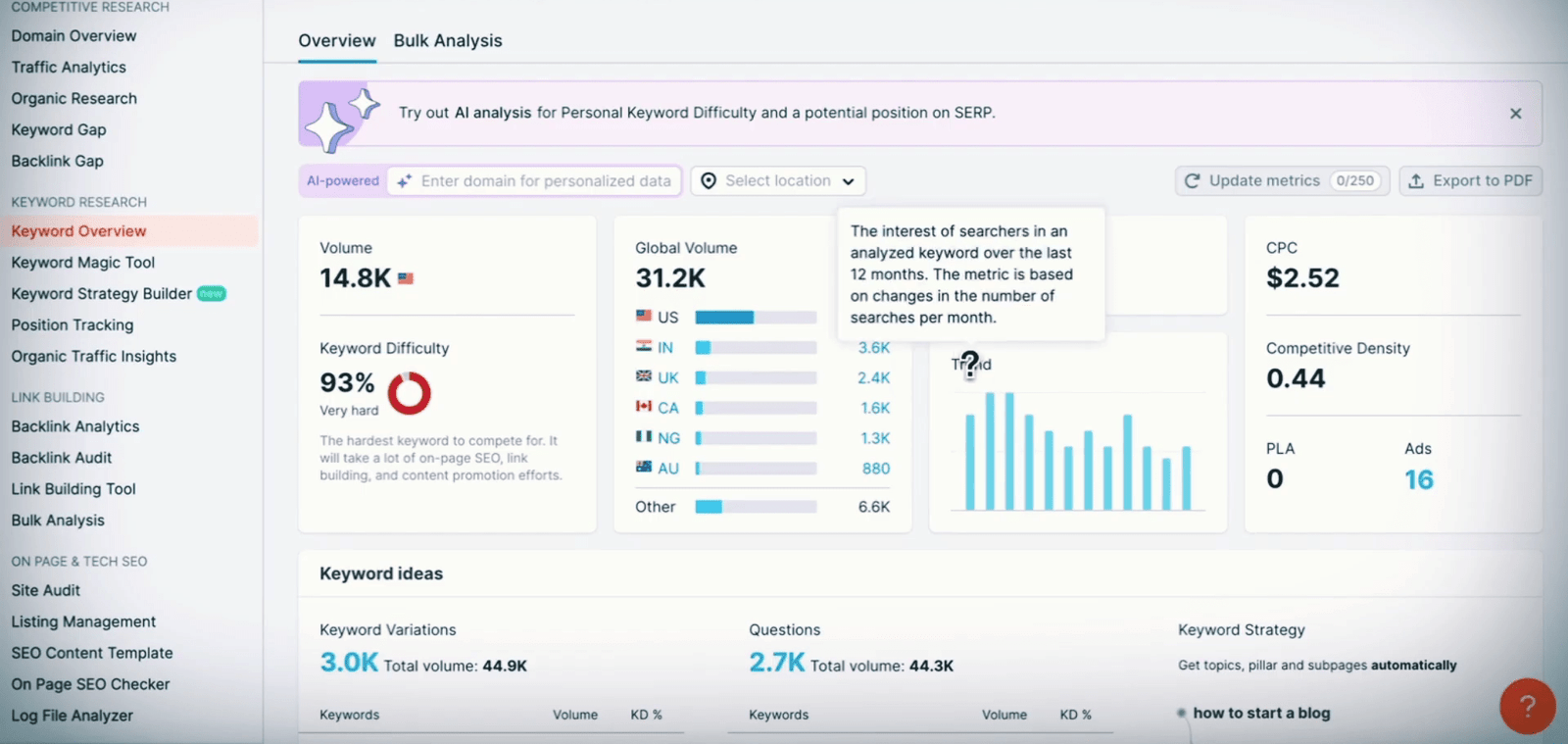
Examine the keyword trend over time. Stable or increasing trends are ideal. A downward trend might suggest declining interest.
Trend Analysis:
- Sustained Interest: Look for consistent or growing trends.
- Decline: Steer clear of keywords with falling interest.
Step 7: Assess Cost Per Click (CPC)
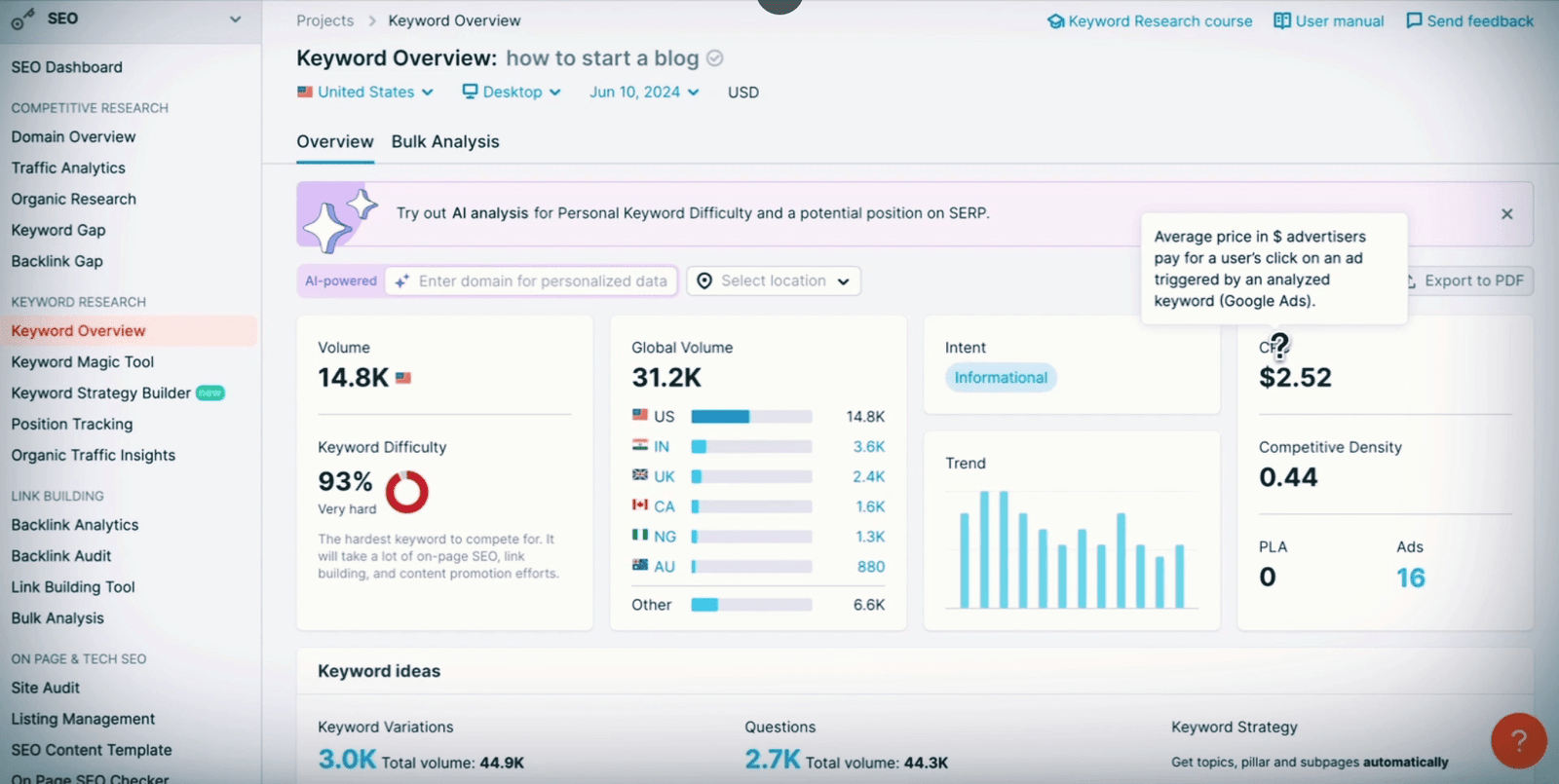
CPC provides insights into the competitiveness of a keyword. High CPC indicates businesses are willing to pay more, signifying a competitive market.
CPC Insights:
- Competitive Landscape: High CPC means more competition.
- Value Indicator: Higher CPC often correlates with more valuable keywords.
Step 8: Explore Keyword Variations
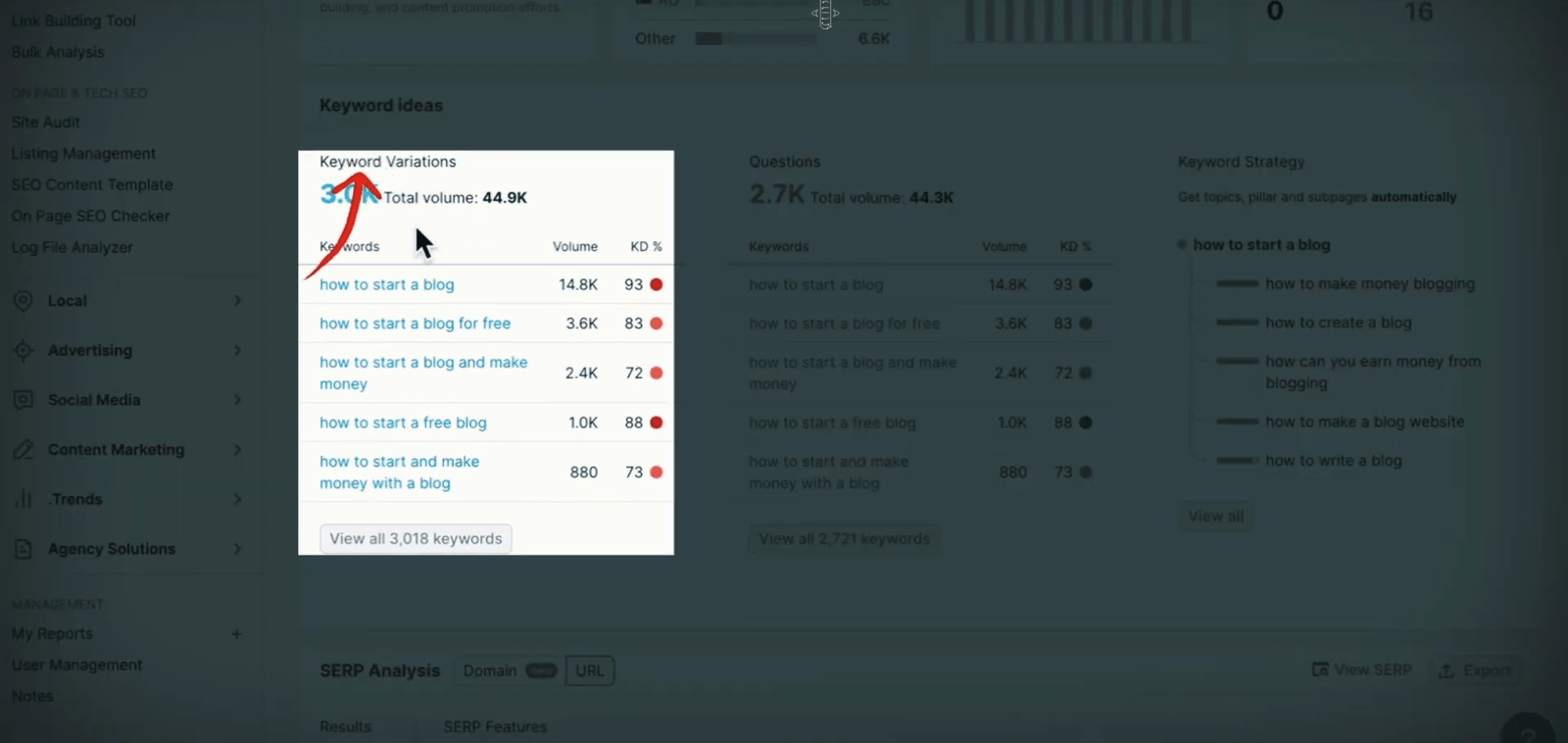
Keyword variations can help in building a comprehensive content strategy. These variations are especially useful when creating detailed outlines for articles during keyword research.
Benefits of Keyword Variations:
- Broad Coverage: Capture a wider audience.
- Content Ideas: Discover related topics to cover.
Step 9: Conduct SERP Analysis

Finally, analyze the Search Engine Results Page (SERP). Look at the top-ranking pages for your keyword. For “how to start a blog,” authoritative sites like Wix, Reddit, and Hostinger dominate.
SERP Analysis Tips:
- Understand Competition: Identify who you’re up against.
- Maintain Quality Over Quantity: Focus on creating superior content to outrank existing pages.
Conclusion
Navigating the keyword landscape doesn’t have to be daunting. Semrush offers a robust toolkit to dissect and understand keywords, paving the way for informed content strategies. Whether you’re starting or scaling your online presence, leveraging these insights can propel you forward.
Your Semrush Toolkit
For those new to Semrush, I have an exclusive offer: a 14-day PRO trial for free. This extended trial gives you ample time to conduct thorough keyword research, craft detailed article briefs, and even perform a backlink audit. Sign up through my special partnership link, and dive into the world of advanced SEO with Semrush. Remember, every great journey begins with a single step — start yours today!
If you find Semrush as beneficial as I do, consider upgrading to a paid plan. By using my affiliate link, you’ll support my work, and I’ll earn a small commission at no extra cost to you.
This blog post is designed to provide you with actionable insights, backed by personal experience and expert knowledge. By following these steps, you can harness the full potential of Semrush and optimize your content like a pro.
Disclaimer: Some of the links above may be affiliate links, which means that if you click on them, I may receive a small commission. The commission is paid by the retailers at no cost to you, and this helps to support our channel and keep our videos free.



